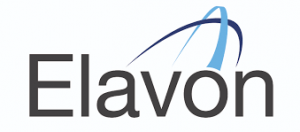This article is an excerpt from GovLoop’s recent report, “Transforming the State and Local Government Payment Process.” Download the full report here.
Private-sector payment solutions are constantly improving, so citizens have become frustrated with government services that can be inferior to the commercial versions.
“Constituents know their alternatives and they’re demanding digital payments,” said Marlen Prato, Head of Strategic Markets, Public Sector at Elavon, a payment solutions provider. “That’s how the world functions now.”
But state and local governments have traditionally worked only with paper processes, including payment acceptance. Agencies are trapped in the past by a mix of compliance, monetary and resource constraints.
Many governments believe that modernizing digital payments is grueling, expensive and time-consuming. Some problem areas include:
Infrastructure investments – Organizations have spent years investing in physical IT hardware and software that are difficult to replace and lack flexibility. That’s because updates are costly and labor intensive, not to mention new payment terminals or Point-of-Sale (POS) systems require cultural change from leaders and end users.
Funding – Money is tighter than ever for agencies amid funding delays, revenue fluctuations and rising costs. Constituents also want more accountability and transparency surrounding how their tax dollars are being spent. Governments are accounting for every dollar and choosing wisely where to spend each one.
Protecting data – Modernizing digital payments creates new challenges for protecting cardholders’ data. Funding constraints slow agencies’ infrastructure and workforce updates, significantly affecting their ability to thwart or effectively mitigate data breach events. Organizations must consider how much breaches will cost them, both financially and in trustworthiness.
Compliance – The payment card industry is strictly regulated, and it treats transaction security with the utmost seriousness. Agencies processing debit, credit and other card payments must comply with industry, state and federal guidelines or face consequences. Compliance is a costly burden and may require adding personnel to manage this function.
State and local governments reduce costs, control revenue and manage their daily operations more efficiently, however, when they modernize their payment environment. Most importantly, they meet constituent expectations with multiple channels for quicker, more convenient transactions.
Download the full report now to find out how your agency can bring its payment processing from the past and into the future.





Leave a Reply
You must be logged in to post a comment.